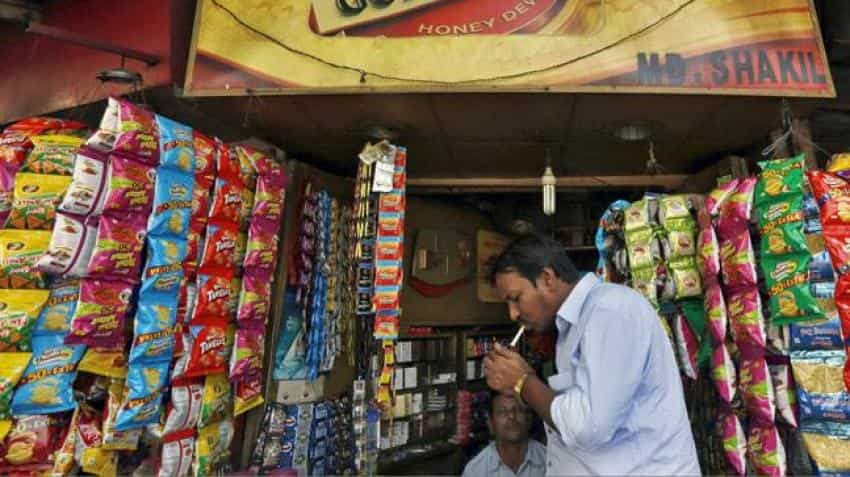GST anti-evasion: Cess likely on pan masala at manufacturing stage
The Council will look at levying the cess at the manufacturing stage based on production capacity as against the current practice of imposing it on supplies made by the manufacturer

The GST Council is likely to consider levying cess on certain commodities like pan masala at the manufacturing stage itself, a move aimed at checking tax evasion and shoring up revenues.
The Council will look at levying the cess at the manufacturing stage based on production capacity as against the current practice of imposing it on supplies made by the manufacturer.
This proposed amendment to the GST (Compensation to States) Act, 2017, would be deliberated upon by the council in its meeting later this month.
As per the amendment, compensation cess would be levied on the presumptive capacity of production declared by a manufacturer to the Goods and Services Tax (GST) authorities, sources told PTI.
Commodities like pan masala are prone to tax evasion as they are available in small sachets and are bought mostly in cash and hence tracking their final supplies is difficult for tax authorities.
Once the Council, chaired by Finance Minister Arun Jaitley and comprising his state counterparts, approves the proposal, it would be sent to the law ministry for vetting.
The amendment is likely to be introduced in the second leg of the Budget session of Parliament in March.
Currently, on top of the highest GST rate of 28 per cent, 60 per cent cess is levied on pan masala.
However, pan masala containing gutkha attracts 204 per cent cess.
A cess, on top of highest tax rate, is levied on luxury, demerit and sin goods.
The proceeds from the cess are utilised to compensate states for any revenue loss on account of implementation of the GST regime from July 1, 2017.
According to sources, a new section is likely to be inserted in the GST (Compensation to States) Act as an "enabling provision" giving power under the law to levy and collect cess on "specified goods" based on the capacity of manufacture or production.
This provision was necessary to "safeguard revenue interest", they said, adding once the cess is levied at the manufacturing stage, further supplies would not attract the levy.
The rules for arriving at the annual value of supplies based on the capacity of production would be framed by the GST Council and such value for each factory or unit would be determined by an Assistant Commissioner level officer.
Besides, the amendment is also likely to provide for situations wherein there has not been any manufacturing in a factory for a continuous period of 15 days or more.
In such cases, cess calculated on a proportionate basis is proposed to be abated for such period.
The anti-evasion measure comes on the back of deceleration in GST revenue collections, which slipped to over Rs 83,000 crore in November 2017 from over Rs 95,000 crore in July.
Commenting on the proposal, AMRG & Associates Partner Rajat Mohan said the provision would be like the erstwhile Central Excise regime whereby tax collection was based on number of packing machines installed in the factory for items like pan masala, gutkha, unmanufactured tobacco and chewing tobacco which are prone to tax evasion.
"Companies producing notified goods might be in state of jinx, as dual valuation provisions are to be made applicable.
"Looking ahead, CGST/SGST/IGST would be charged on transaction value method and compensation cess would be charged based on installed capacity of production. This seems to be homecoming of production capacity based taxation,' Mohan said.
But the move, he said, could lead to rise in litigation as there would be numerous open-ended questions like determination of annual production capacity, temporary closure of factory and lower production due to lean season.
Deloitte India Partner M S Mani said it is expected that several anti-evasion measures would be put into effect in order to curb evasion and increase revenue collections.
"These could include introduction of reverse charge on certain transactions, introduction of GST on the basis of presumptive capacity for certain products, in addition to e- way bill system that comes into force?from February 1," Mani said.
Get Latest Business News, Stock Market Updates and Videos; Check your tax outgo through Income Tax Calculator and save money through our Personal Finance coverage. Check Business Breaking News Live on Zee Business Twitter and Facebook. Subscribe on YouTube.
RECOMMENDED STORIES

SBI 444-day FD vs PNB 400-day FD: Here's what general and senior citizens will get in maturity on Rs 3.5 lakh and 7 lakh investments in special FDs?

Small SIP, Big Impact: Rs 1,111 monthly SIP for 40 years, Rs 11,111 for 20 years or Rs 22,222 for 10 years, which do you think works best?

Rs 3,500 Monthly SIP for 35 years vs Rs 35,000 Monthly SIP for 16 Years: Which can give you higher corpus in long term? See calculations
04:47 PM IST









 GST Council clarifies on popcorn taxation
GST Council clarifies on popcorn taxation 55th GST Council Meeting: No GST payable on penal charges levied & collected by banks & NBFCs from borrowers for non-compliance, says Nirmala Sitharaman
55th GST Council Meeting: No GST payable on penal charges levied & collected by banks & NBFCs from borrowers for non-compliance, says Nirmala Sitharaman  GoM on rate rationalisation defers report submission to GST Council
GoM on rate rationalisation defers report submission to GST Council GST Council postpones decision on slashing tax on life, health insurance
GST Council postpones decision on slashing tax on life, health insurance  GST Council Meeting: Packaged & labelled popcorn with added sugar to attract 18% rate, decision on insurance products deferred
GST Council Meeting: Packaged & labelled popcorn with added sugar to attract 18% rate, decision on insurance products deferred